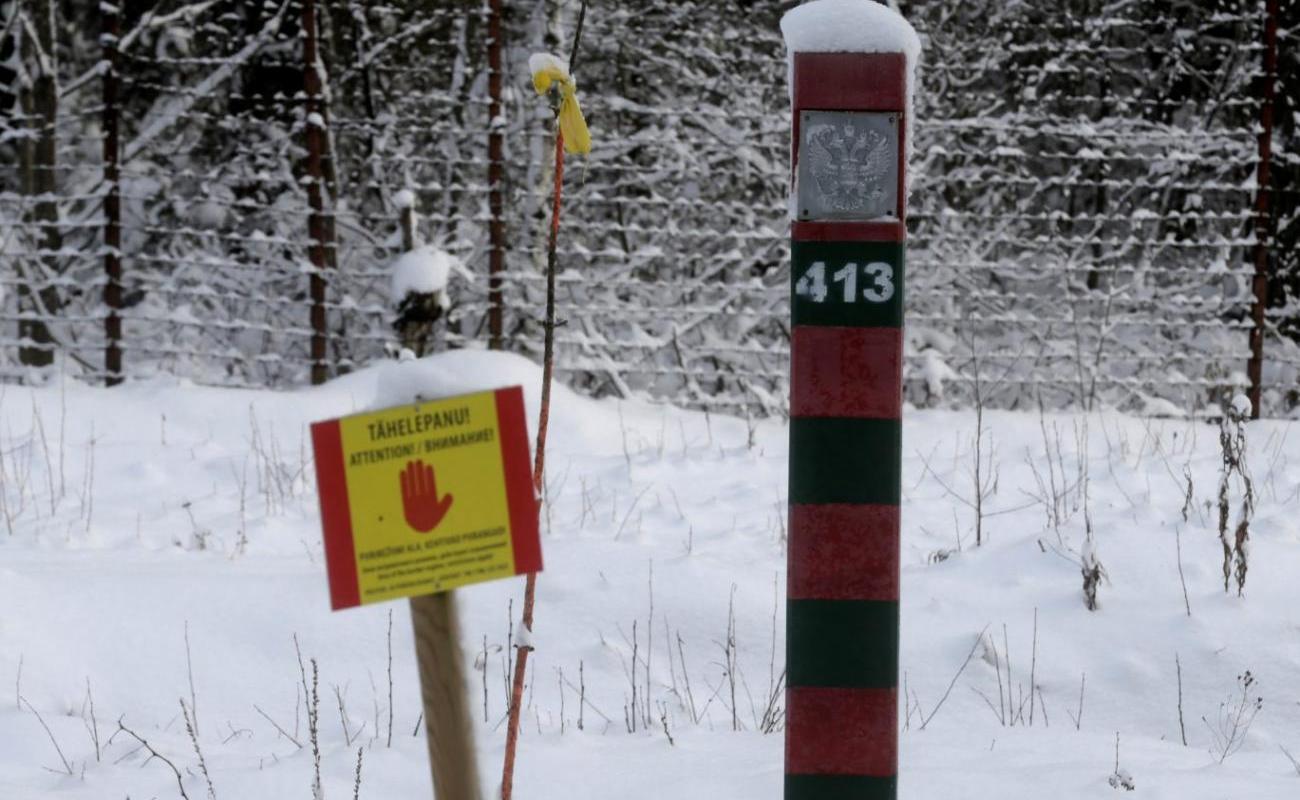Boot Camp: Scare Stories

The thick forest of the Saatse Boot protrudes sharply but pointlessly into Estonian territory. The dented oblong is crossed by a quiet single-track lane, about 800m long, which is not connected to the Russian road network. The only reason to use this road is to get from one bit of Estonia to another. In normal times (and with a normal neighbor), this would be an innocent geographical quirk, one of many in Europe’s often oddly-drawn frontiers. A border treaty, signed in 2014 but never ratified, was meant to tidy this up, along with another small anomaly, with a land-swap.
Now the “Boot” is catching world attention, for reasons that should worry anyone concerned with Europe’s peace and security. On October 10th, Estonian border guards noticed a larger-than-usual Russian presence—unidentified military personnel, but not border guards—on the usually deserted road. Instead of walking along the highway, the Russians formed a line across it: something not seen before. The Estonians decided to close the route temporarily. A local border guard commander explained the move by saying that “the situation poses a real threat”.
Highly-charged language like this may help with messaging about vigor and vigilance to a domestic audience. But it fails to take into account the overheated international context. Any news about mysterious Russian behaviour posing a “real threat” near the Estonian border feeds outsiders’ perceptions of looming doom. Russia has been intensifying sub-threshold attacks on infrastructure and transport around the Baltic Sea region. Media scare-stories and a recent best-selling book suggest (fancifully in my view) that Estonia is the likely target for a Russian land grab.
The optics stoked the excitement. A 13-second video clip released by the border guards had strong visual echoes of the “little green men” who spearheaded Russia’s seizure of Crimea in 2014. Social media buzzed with feverish interpretations and paraphrased quotes. If Russia were indeed planning a serious provocation against Estonia, isn’t this just how it might start? I doubt it. Estonia is armed to the teeth, enjoys strong support from powerful Nato allies, and is ready to defend itself. I worry far more about the flimsy defences and defeatist mindsets in some other parts of Europe.
If some ill-chosen words made unhelpful headlines, closing the road made sense. The Kremlin is quite capable of claiming that its heroic armed forces are deploying to protect Russian territory from Estonian extremists (or transgender junkie devil-worshippers: anything is possible). Russian border guards could “arrest” a passing Estonian driver, or an adventure-seeking foreign tourist, or just close the road and claim a victory. Better safe than sorry.
On October 12, Estonia’s foreign minister, Margus Tsahkna, issued a firmly worded statement dismissing “exaggerated” reports of tension on the border: “nothing acute is happening,” he said. “The Russians are acting somewhat more assertively and visibly than before, but the situation remains under control”.
What Estonia does not control, however, is its borrowing costs on international financial markets, the competition for trade and investment, and foreigners’ choice of tourism destinations. The danger for all the frontline states is that their national security decisions, however prudent, make outsiders think that visiting, trading, and investing there is too risky. These perceptions can become self-reinforcing. It has taken the Baltic states, Polan,d and other former captive nations decades to shed the perception that they are part of some exotic, backward “wild east”. They now risk having to battle a new myth, of being beleaguered garrison states: admirably modern and heroic, but no more investable than Ukraine. That is the real damage done by the stunt in the Saatse Boot.
